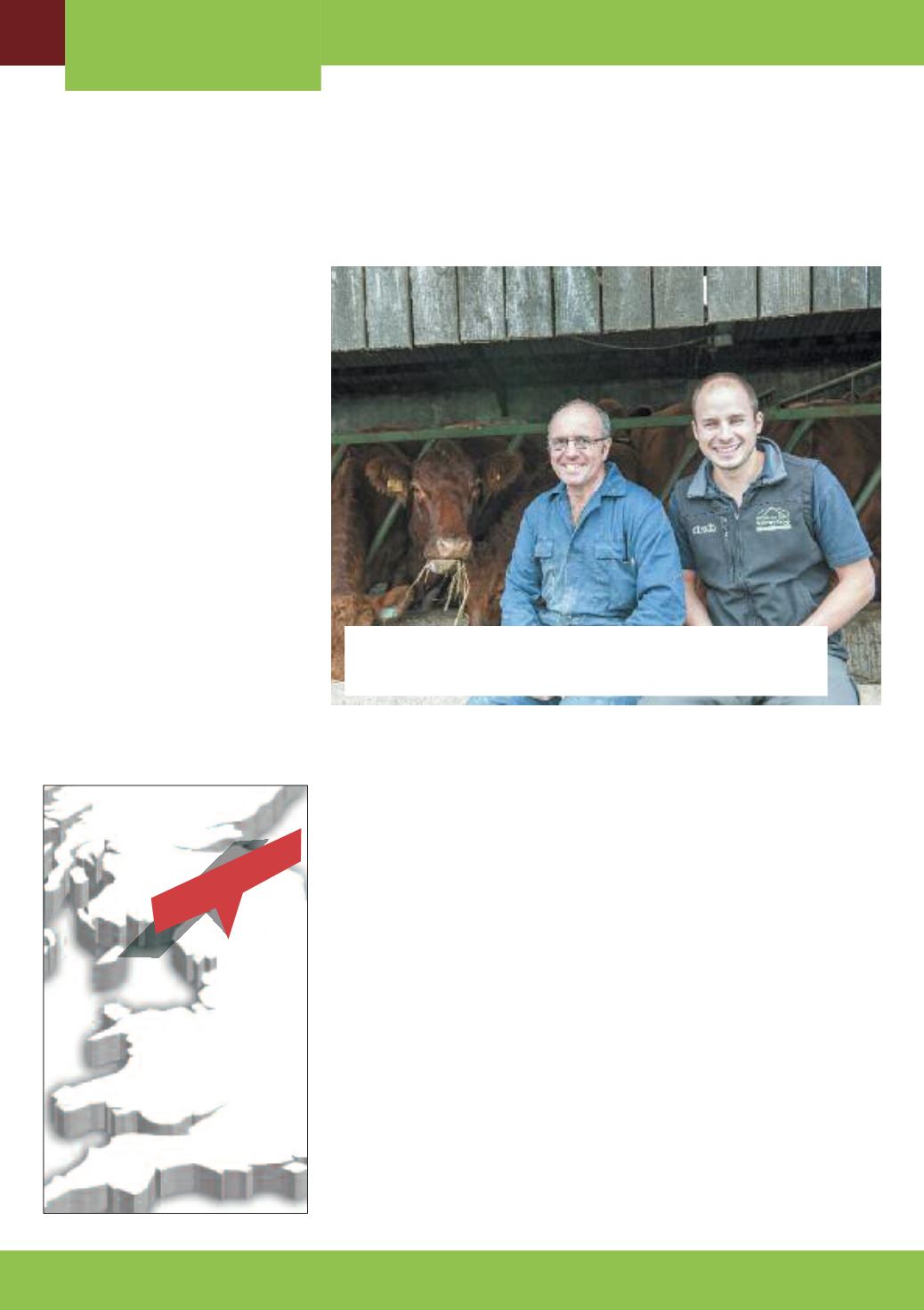
BVD SUPPLEMENT
LIVESTOCK MATTERS - BVD SUPPLEMENT
Running a herd of high health
Stabiliser suckler cows led
Cumbrian livestock farmer James
Dixon to focus on controlling BVD.
From a background in milk production
that ended 11 years ago when the
Dixon family decided dairy expansion
was not for them, James, who farms
with his brothers Andrew and Richard
and son Steven at Kitcrag Farm, Selside,
near Kendal, concentrated on beef
cattle operation.
The 445 acre Kitcrag is run with the
adjoining 433 acre Yoadpot farm and a
further 120 acres of rented land. The
land rises from 600ft above sea level to
1,300ft with all of it in the Less
Favoured Area and with 80% of it
Severely Disadvantaged. Just over 250
acres is enclosed fell. Annual rainfall
can be as high as 100 inches.
Previously there was a herd of 40
suckler cows at Yoadpot and in 2004
the decision was taken to increase beef
cow numbers and, subsequently, switch
to the Stabiliser breed. The farm also
carries a flock of 1,100 ewes, 800 of
which are Swaledales, crossing 500
with the Bluefaced Leicester to produce
North of England Mule gimmer lambs.
These are mainly sold at the NEMSA
September sales with the remainder
making up the Mule flock. The farm
also has a free range egg enterprise
with 12,000 birds accommodated on
around 35 acres.
The beef herd, which is closed apart
from bought in breeding bulls, now
numbers 200 mainly pure Stabiliser
females bred to a Stabiliser bull. Sales
of in-calf heifers or cows with calves at
foot, made through the Stabiliser Cattle
Company (SCC), are an important
income stream.
SCC stipulates that cattle sold through
it have to be in a health scheme, which
includes vaccination, and so the herd at
Kit Crag is in the SAC Premium
Health Scheme.
“We had BVD in the herd 20 years ago
which resulted in still born calves,
abortions and calves with mucosal
disease – ultimately leading to a lot of
calf losses,” said James.
“Although our dairy herd was closed at
the time, we ran the sucklers as a flying
herd, buying in up to eight bulling
heifers or in calf cows as replacements
each year, and we had problems. We
then started buying in just heifers and
there was a period of respite from the
problem, but this did not prevent the
disease reoccurring so we began
vaccinating as part of our disease
control.”
The herd has now been in the SAC
health scheme for five years and
maintains a routine vaccination
programme for BVD. The policy is to
monitor BVD by testing for the disease
in 10 month old heifers – this being
termed a sentinel group.
Two years ago after discussion with
their vet Andrew Crutchley, of XLVets
member practice the Westmorland
Veterinary Group, Kendal, the Dixons
started making tests for BVD on ear
TISSUE TEST TECHNOLOGY HELPS
UNDERPIN BVD CONTROL STRATEGY
Cumbrian suckler producer James Dixon is working with his vet
Andrew Crutchley of Westmorland Vets to maintain high health
status in his pedigree Stabilisers.
Westmorland Vets


